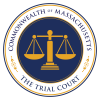- Trial Court Law Libraries
Accusations swelled, and soon, many people had been examined and jailed, awaiting trial.
What laws were followed during the Salem witch trials of 1692?
Under the original royal charter (1629) of the Massachusetts Bay Colony, criminal law was administered by the Court of Assistants, which consisted of the Governor, Deputy-Governor, and a number of Assistants. There was no statutory criminal law in the colony at that time, and without legal training, the Court of Assistants judged cases and punishments based on what they knew of English law and by their instincts of what they thought was right.
The primary English law about witchcraft was the so-called Witchcraft Act of 1604, actually An Act against Conjuration, Witchcraft and Dealing with Evil and Wicked Spirits. This made witchcraft a felony; a witch convicted of a minor offense could receive a year in prison, but any witch accused and found guilty a second time was sentenced to death. [To read the Act, see this 2008 conference volume Witchcraft and the Act of 1604.
In 1641, the General Court (i.e., the legislative body of the Massachusetts Bay Colony) drafted the Body of Liberties, a collection of of civil and criminal laws and rights. Most of these were later included in the colony’s first printed compilation of statutes issued as The Book of the General Lawes and Libertyes Concerning the Inhabitants of Massachusetts (1648). The Body of Libertiesoriginally had twelve capital offenses, including witchcraft. The law on witchcraft was short, and cited Biblical sources for its authority:
“If any man or woman be a witch, that is, hath or consulteth with a familiar spirit, they shall be put to death. Exod. 22. 188; Deut. 13. 6, 10; Deut. 17. 2, 6.”
(A “familiar spirit” was a devil or demon that aided the witch to perform bad deeds through magic.)
Facsimiles of this book are owned by the Massachusetts Trial Court Law Libraries; and a facsimile is available to read on the Commonwealth of Massachusetts website (see especially page 94).
In practice, few people were executed for witchcraft before the Salem witchcraft trials of 1692. Instead, juries were reluctant to convict, or the accused were given sentences for lighter offenses. In the English tradition, although the rules of evidence were vague, legal experts insisted on clear and “convincing” proof of a crime. The best proof was a confession, and the testimony of at least two trustworthy people that the accused had acted with magical powers given by the devil. Even confessions were considered doubtful without other evidence. So-called “spectral evidence”, in which a victim testifies to experiencing an attack by a witch in spirit form, invisible to everyone else, was not accepted as evidence.
The Salem witchcraft trials of 1692 happened at the worst possible time. The charter of the colony had been temporarily suspended (1684-1691) due to political and religious friction between the colony and England. A new charter (1691) arrived from England in May 1692, along with the new governor, but as yet, the General Court had not had time to create any laws. Nevertheless, the new governor created a special court, the Court of Oyer and Terminer [“to hear and determine”] to deal with the witch cases. The commission that created this court said that the judges were to act “according to the law and custom of England and of this their Majesties’ Province.” But this ignored the difference between the laws of England and the old laws of New England.
In the absence of guidance by specific colony laws, and acting in consonance with the general paranoia of the community, the judges famously accepted “spectral evidence”, and other untrustworthy kinds of evidence, as proof of guilt. Moreover, the magistrates let it be known that an accused witch could avoid execution by confessing, repenting, and putting the blame on someone else. This caused the accusations to multiply. Nineteen men and women were executed by hanging, one was killed by torture, and others died in prison.
In October 1692, the governor dissolved the Court of Oyer and Terminer, and in December 1692, the General Court passed An Act against Conjuration, Witchcraft, and Dealing with Evil and Wicked Spirits.
This law, modeled on the English Witchcraft Act of 1604, mandated the death penalty for severe acts and repeat offenders, and imprisonment for lesser acts. A new Superior Court of Judicature was created to serve as the highest court in Massachusetts, and in January 1693 it began to hear the remaining witch trials. More importantly, the governor instructed the judges not to accept spectral evidence as proof of guilt. Therefore, most of the remaining witch trials resulted in acquittal. The governor pardoned the rest. The time of witchcraft hysteria in Massachusetts was over.
For more on the Salem witch trials, see the University of Virginia’s Salem Witch Trials Documentary Archive and Transcription Project.
Written By: Gary Smith
